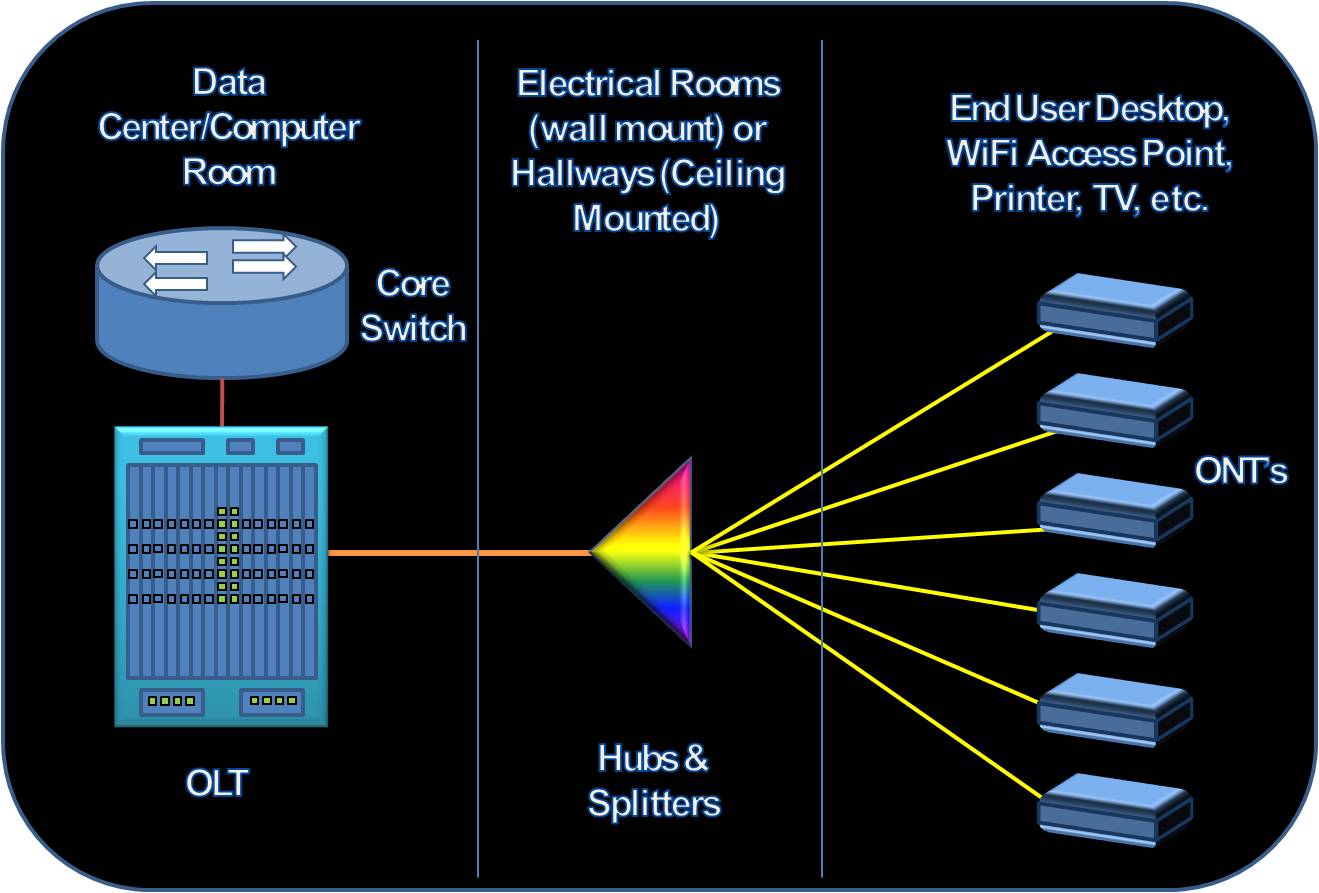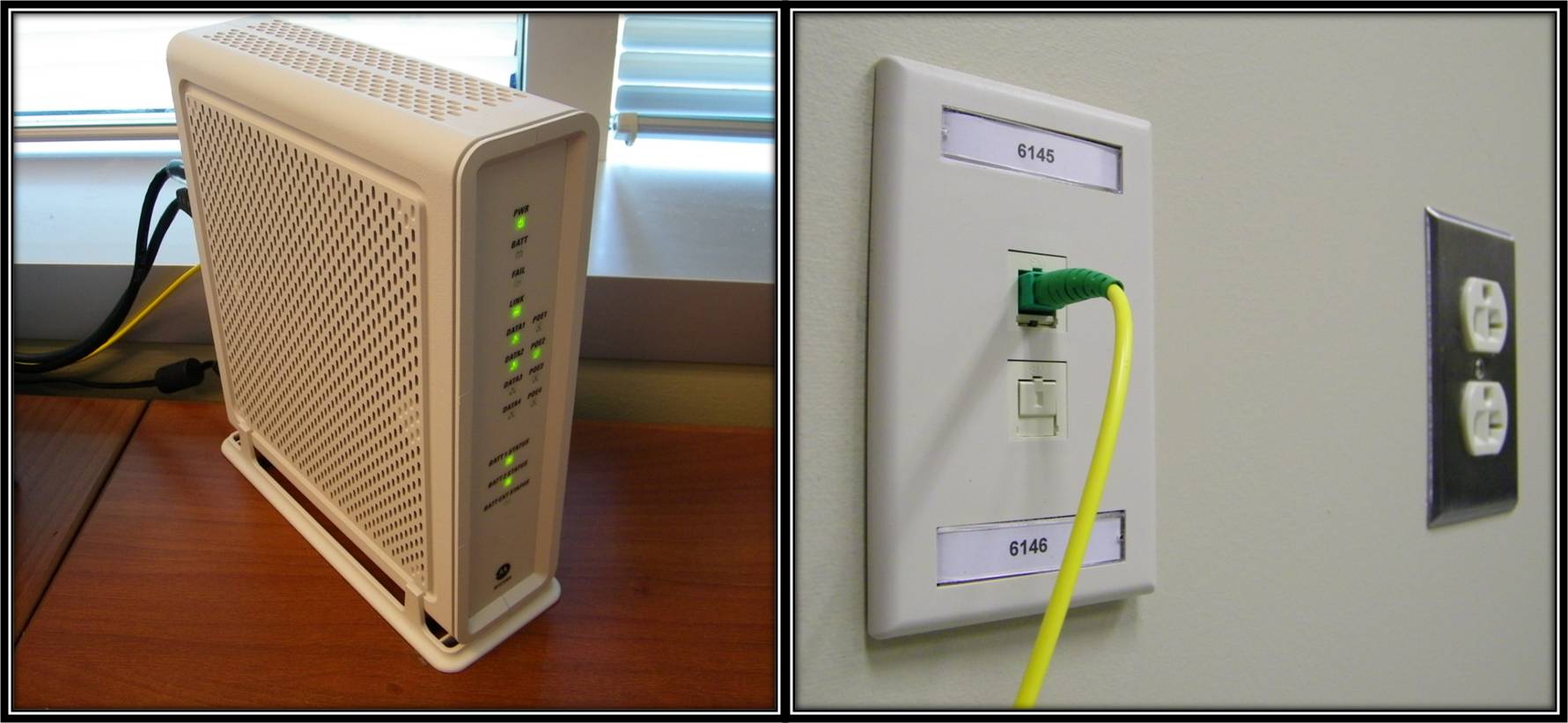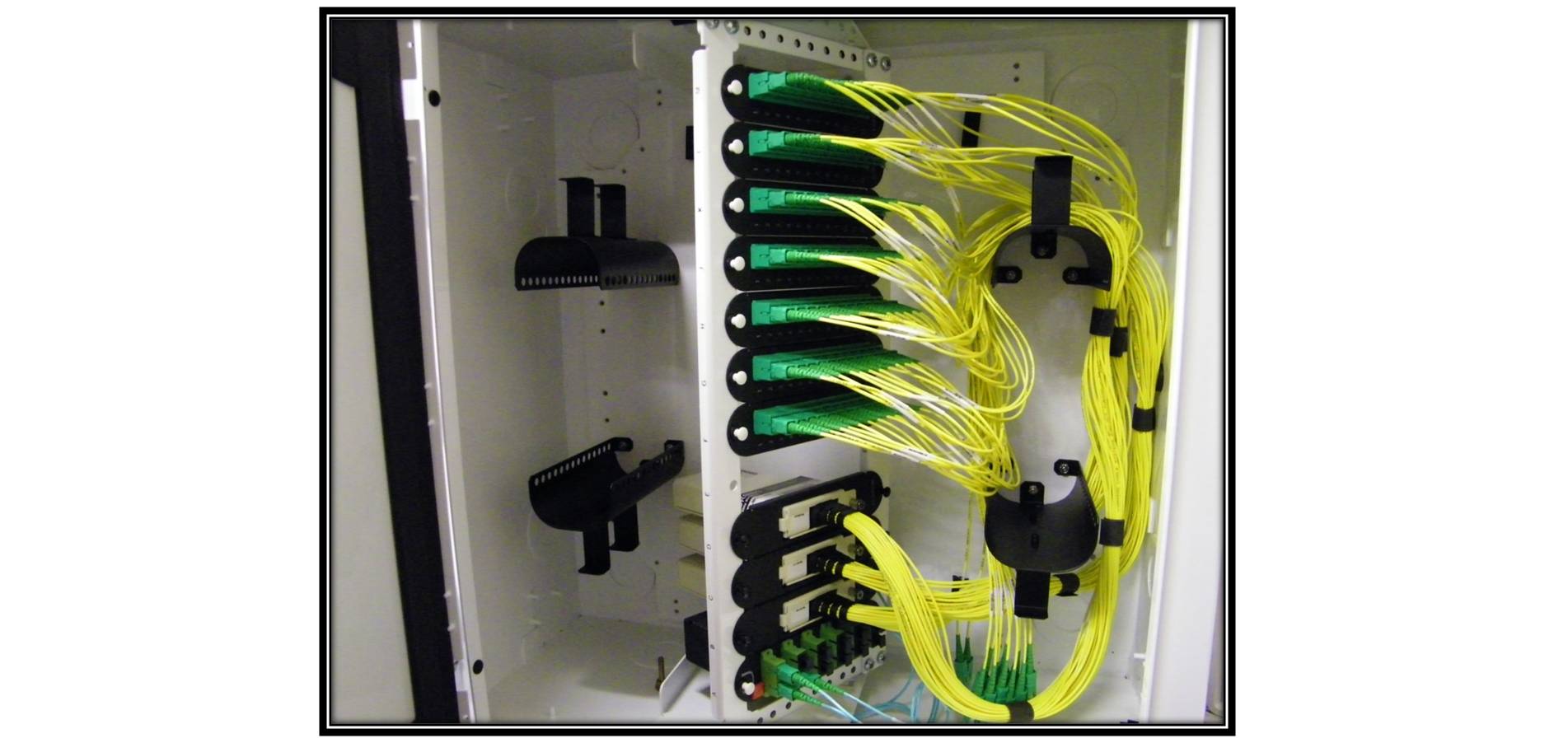
Introduction to Passive Optical LAN (POL)
By implementing a POL, all the operational overhead expense associated with riser closets, the UPS, the HVAC, the access control systems, the cabling cross-connects; can all be eliminated.
End User ONT Deployments

Not much changes for the end user connected to a POL. They will still connect their IP telephone or PC to an RJ45 Ethernet jack. Instead of a wall mounted Ethernet jack, the RJ45 jacks in a POL are found on the Optical Network Terminal. The ONT is deployed on the end user's worksurface or is attached underneath toward the rear corner of the desk to keep it out of the way. Alternatively, some environments may dictate the ONT be installed in flush mounted enclosures within the wall such as in a hospital, dorm, or library environment. A single, bend resistant fiber connects the ONT to the wall plate which is equipped with a single SC fiber connection.
Fiber Hubs

The fiber hub is nothing more than an enclosure for terminating the horizontal fiber runs from each workstation. The fiber also houses the passive splitters which are cross-connected to each of the horizontal cables. But unlike a legacy active Ethernet network, there is no need to perform cross-connects within the hub. All of the fibers can be cost-effectively "lit" by an upstream PON port and any network changes are now logical assignments of VLANs representing the various services the end users require. In fact, you will likely not need to ever go into a fiber hub after installation unless you need to add a fiber. Consequently the fiber hub can simply be installed in electrical rooms, above the ceiling, or even within a 2'x2' ceiling tile grid with a lockable door. The fiber hubs can be placed according to the geographical layout of the facility to enable easier cable runs or to minimize disruption if an area is subsequently renovated or undergoing new construction.
Search site:
Advertise here



